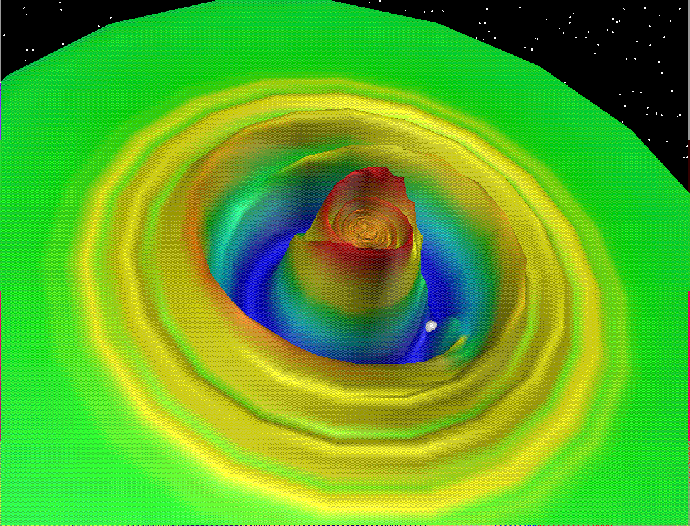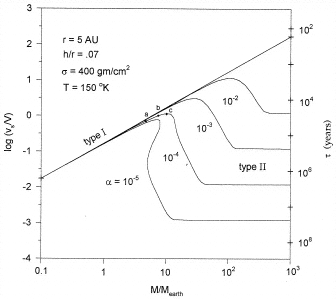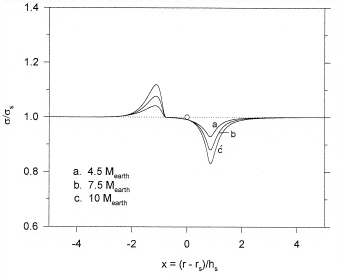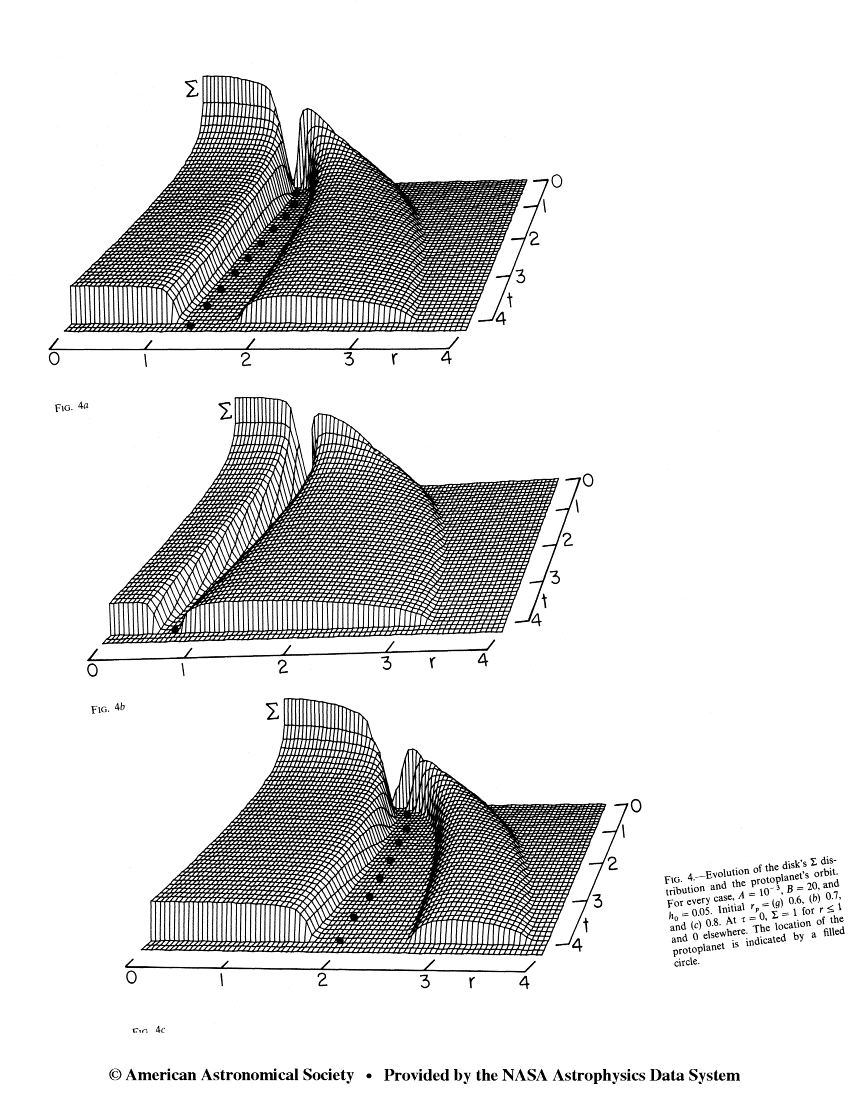 table of
contents
table of
contents
 next topic
next topic
4. Other worlds predicted and
interpreted by theory
The `normal Jupiter' family is strictly speaking empty so far,
since even 47 UMa can be objected to based on its r<5 AU.
One of the most surprising observations of exoplanets is the existence
of `hot Jupiters'
very close to the host stars (3 within the range
of tidal interaction with the star).
Migration: In or out? With or without gaps?
It is very difficult to form planets close to the stars
in a standard theory of planet formation using minimum mass
solar nebula, because
- it's too hot there for grain condensation (in extreme closeness), or
- there's too little solid material in the vicinity to built
protoplanet's core of 10 ME (applies to r~1 AU as well)...
- esp. to build it quickly enough (< 3 Myr)
- there's too little gas to build a massive envelope
The main theoretical theoretical idea used to resolve these problems
is protoplanet migration in the gaseous disk .
The idea is not new, theorists predicted planet migration in the 1980s:
Goldreich & Tremaine (1980),
Ward (1986),
Lin & Papaloizou (1986)
Planet-disk interaction:
- Spiral density waves continuously produced by the gravity
of embedded or external perturber. Many examples of this phenomenon
are known. For instance, this is the Voyager's picture of
a small fragment of Saturn's ring A, perturbed at 3:5 mean motion
resonance with Mimas, and launching a tightly wrapped and viscously
damped density wave:

- Similar waves launched by a Jupiter-sized protoplanet
are illustrated in the picture from a recent Science magazine
editorial (J. Glanz, Science, 30 May; source: Lin & Bryden 1997)

In this picture the planet is sufficiently massive to open a gap.
Typically, ~1 Jupiter mass is needed for that.
There are 2 types of migration, depending on whether or not
the protoplanet (or its solid core) opens a disk gap.
They have been initially studied in 1-D approximation.
Migration type I - no gap
If the object has too small a mass to
open a gap, it will drift inward (Ward 1986, Korycansky & Pollack 1993,
Ward 1997).
Until early 1990s it wasn't certain what the main reason for migration
is (imbalance of surface density of gas, temperature, or specific torques).
It is now thought that the intrinsic imbalance of torques from the inner and
outer disk is dominant.
The rate of migration according to Ward(1997):

The drift rate initially increases linearly with the mass of the protoplanet,
but when the disk density is perturbed much by a moving planet in the
sense indicated in the following diagram,
it opposes the drift:

The planet stops and opens a gap against the action of viscosity
(Lin & Papaloizou 1979, 1986).
Migration type II - inside an open gap
1-D calculations by Lin & Papaloizou (1986) showed the
possibility of tidal locking of the planet in the gap.
The planet, unless more massive than the surrounding disk,
follows the disk's viscous flow.

The dangers of migration
The migration type I described by Ward (1996)
is very rapid, and may shift the protoplanetary core
to arbitrarily small distance from the star in the
allotted ~3 Myr time frame.
Type II migration in a gap is less rapid but also
potentially lethal for perhaps most planets produced in the
disk (Lin et al.)
Survival strategies for planets:
Type I
- Protoplanets
never grow sufficiently to migrate much faster than the disk
(--> terrestrial planets build afterwards?)
- Planets grow quickly (in a runaway process) up to the
core-instability mass, and afterwards skip the troublesome
region of maximum drift rate.
- Maximum rates overestimated?
Type II
- The disk touches the star but the tidal star-planet
interaction keeps the planet at bay
- There is a magnetically produced inner disk clearing
in which the planet finds a safe heaven as a `hot Jupiter'
- The planet overflows its Roche lobe and recedes from the star
 table of
contents
table of
contents
 next topic
next topic






